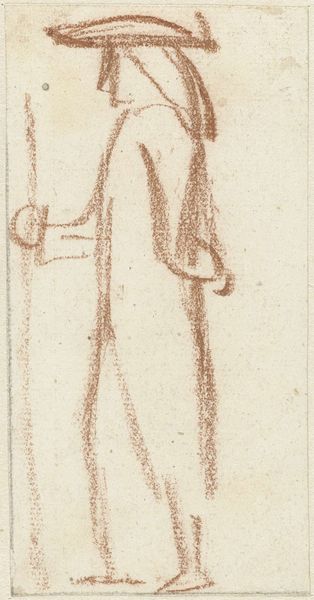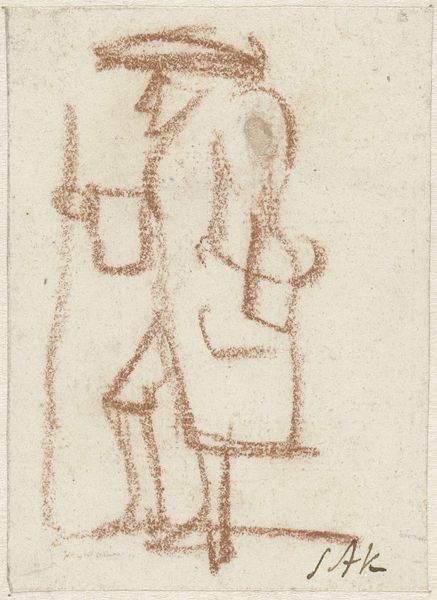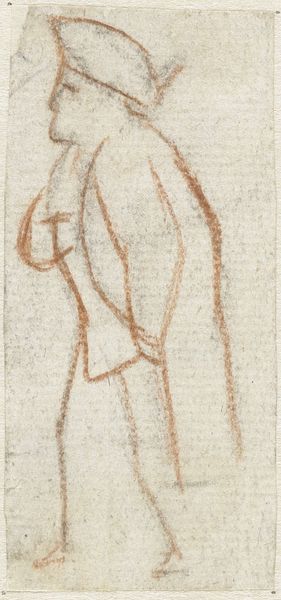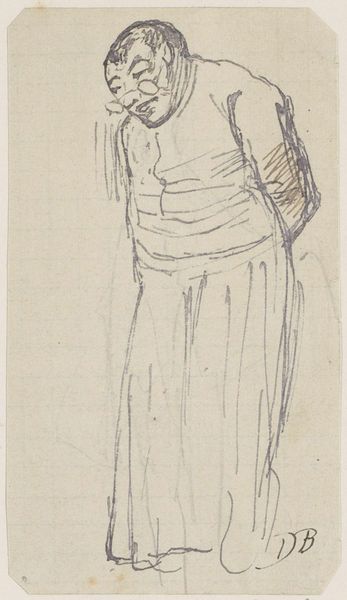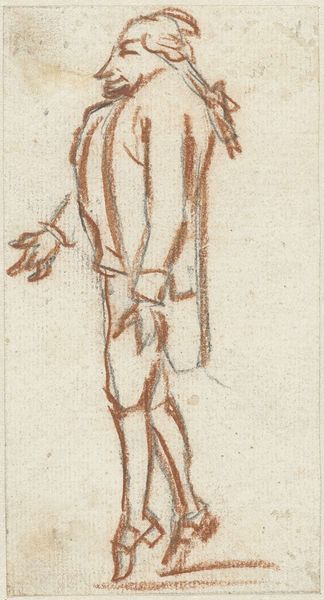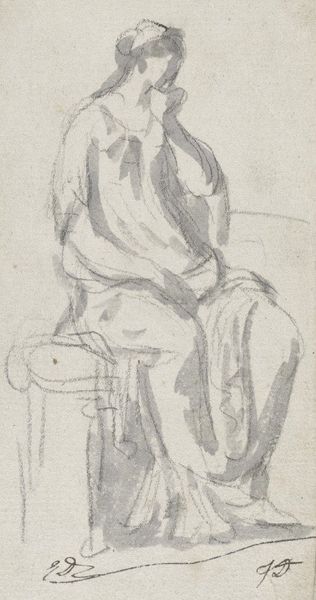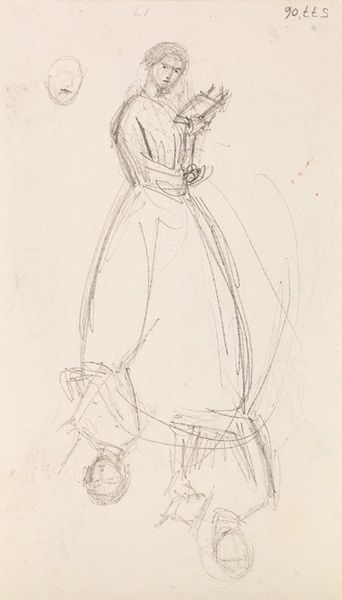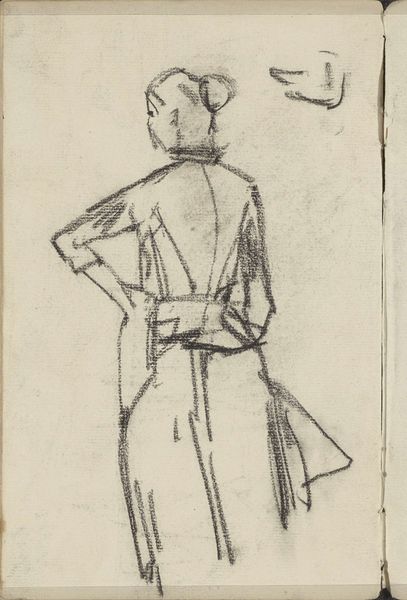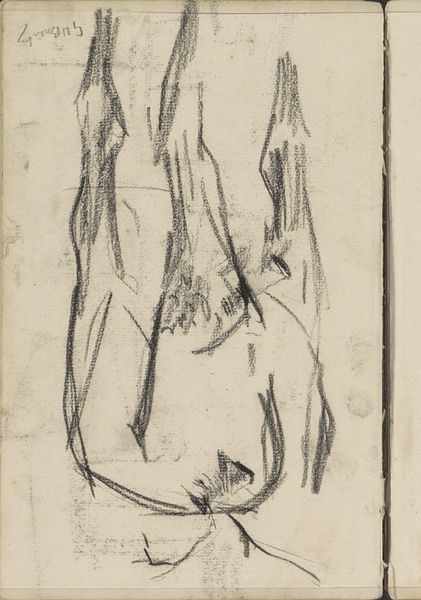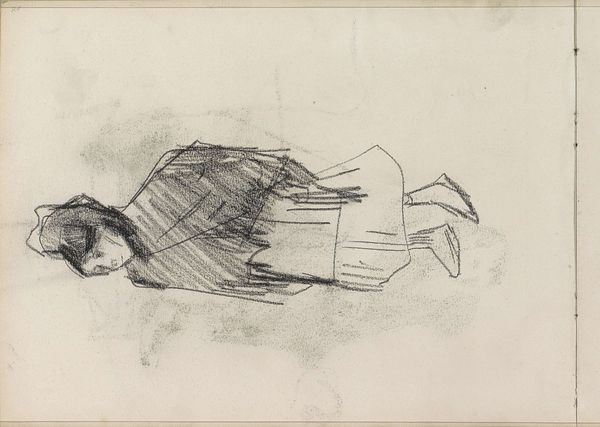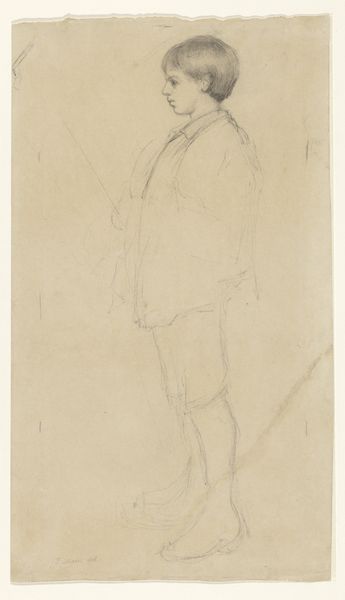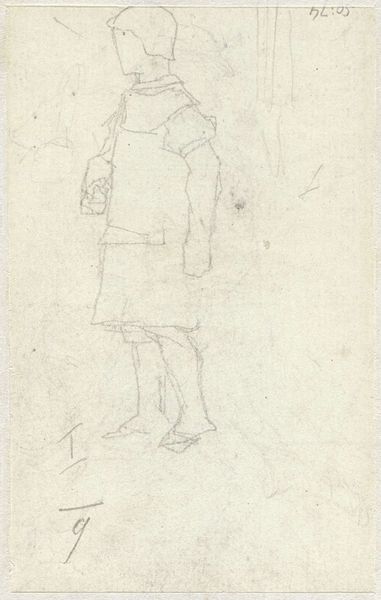
drawing, pencil
portrait
pencil drawn
drawing
pencil sketch
figuration
romanticism
pencil
portrait drawing
Dimensions: height 134 mm, width 72 mm
Copyright: Rijks Museum: Open Domain
Curator: A delicate work fashioned with pencil by Simon Andreas Krausz, this "Caricature of a Standing Man, Seen from the Side" offers a fleeting, almost ghostly presence. Editor: My immediate reaction is its raw simplicity. It feels incredibly immediate. I’m struck by the minimal use of material to convey a persona, an era, possibly a social class, all implied by a few sparse strokes. Curator: Indeed. The sketch dates back to somewhere between 1770 and 1825, an era marked by significant socio-political shifts. One can read into the figure’s austere stance a reflection of the revolutionary fervor brewing, perhaps a subtle commentary on the societal norms of the time, or the restraints that Romanticism was rising to reject. Editor: Look at the hand barely indicated there! The sketch's value for me resides precisely in those suggestive fragments. Pencil was such a useful means to draft for a final oil. Curator: Absolutely. Consider that drawings allowed for the quick dissemination of political satire; pencils democratized the artistic process, creating caricatures or sharing politically charged images which previously were reserved for painted works created for wealthy patrons. Editor: So we are left thinking about its intended function. Was it part of a broader study or intended for circulation on its own terms? Curator: Perhaps that question remains suspended! Ultimately, its power lies in its openness to interpretation; it challenges our assumptions about art’s purpose within political and societal movements. The subject's almost smug facial expression might make one consider the role that privilege and entrenched views play in societal progress. Editor: It does demand that we investigate how the drawing medium shaped the development of representational language within an age marked by both aristocratic norms and a revolutionary fervor. The hand of the artist in rapid production to disseminate revolutionary sentiments throughout broader society! It becomes about understanding class structures or challenging expectations. Curator: The questions about its intent resonate! Examining artwork’s broader effect illuminates our world in previously unknown methods. Editor: Indeed, and focusing on the material conditions, and the labor embedded in that Romanticist fervor expands how we look at and value those works and broader historical eras.
Comments
No comments
Be the first to comment and join the conversation on the ultimate creative platform.
